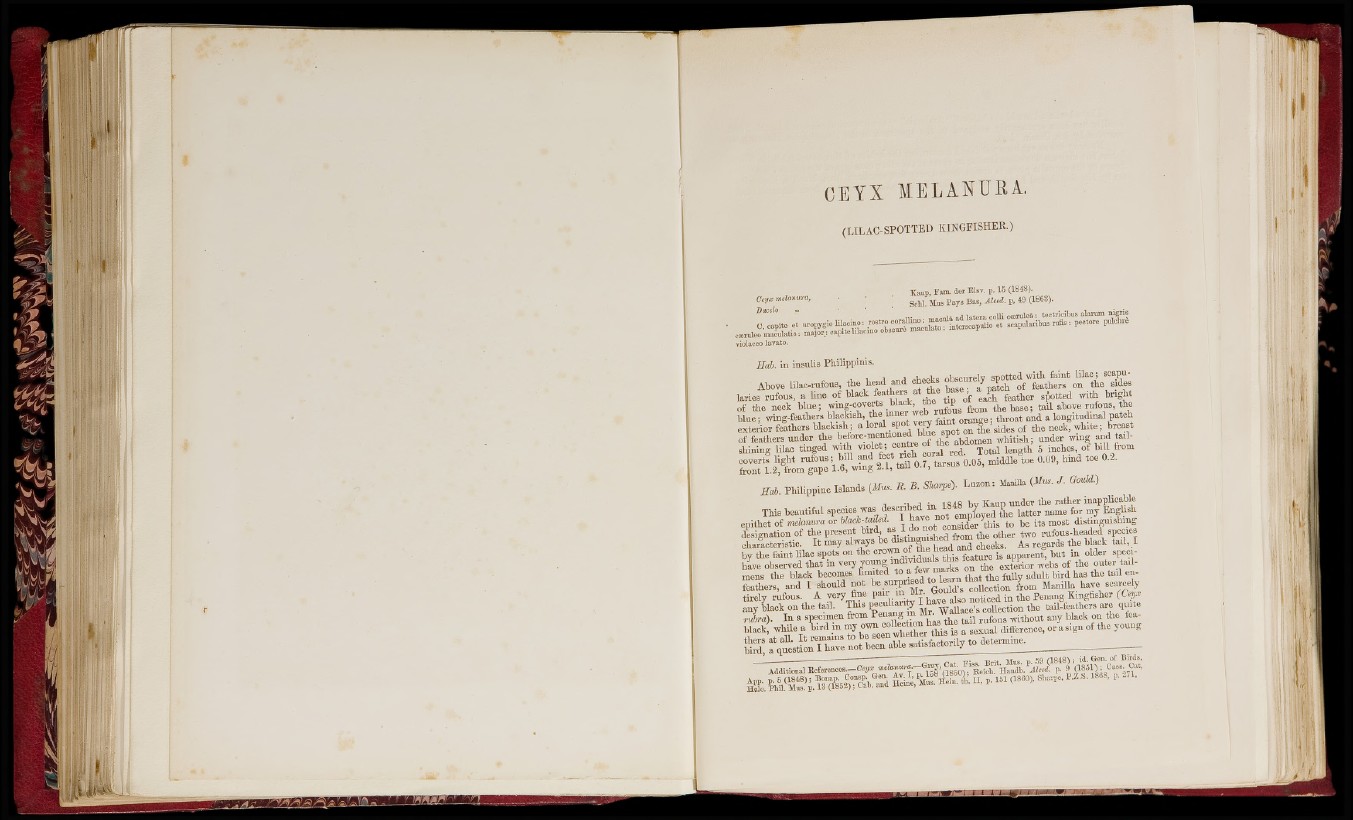
1,
.11*
C E Y X MELANURA.
(L ILA C -S PO T T ED K IN G F ISH EK .)
f ' .
Ceyx melanura,
Dacelo
Kaup, Fam. der Eisv. p. 15 (1848).
Schl. Mub Pays Baa, Alad. p, 19 (1863)-
violaceo lavato.
Hab. in insulis Philippinis.
Above Uihc-rufous, the head and eheeks
laries rufons. a line o f black feather spotted w ith b rig h t
of th e neck b lu e ; from th e b a se; ta il above rnious, the
b lu e ; wing-feathers 7 ® / » ’ *»®™®® fein t o ran g e ; th ro a t and a long itu d in al patch
e x te rio r feathers blackish; a ' « ' / . " T “* sn o t on th e sides o f th e neck, w h ite ; breast
" N S i f e r f t S ^ O . 0 5 , m id d / to e 0.0B. hind toe 0.2 .
Hab. P h ilip p in e Islands (Mus. S . B . Sharpe). L u zo n : Maaffia (Mue. J . GauU)
a 1 J 18AR bv Kaup under the rath e r inapplicable
T h is b eau tifu l ¿ t e net employed th e la tte r name for my English
e p ith e t o f melanura or hlack-talJed. I » /® r th is to be its most d is tm p is h in g
designation o f th e p resen t » '® / 7 . L feom the other two rufous-hewied species
mens th e black becomes lim ited ? / t l L & U y ad u lt bW
leathers, and I should n o t b e s u ip r q ,¿.3 coUection from Manilla have scarcely
tire ly rufous. A v e ry t o e P“ . “ / j noticed in th e Penang Kingfisher (Cajx
any black on th e tail. T h is ^ Wallace’s coUection the tail-feathers are quite
rubra). I n a specimen from P en an „ h“ / • . jj p w ith o u t any black on the ieablack!
while a b ird in “ Y a s e l l a l difference, o r ! sign of the young
S l a : f f J / T h T e / o ! b e e n able satisfactorily to determine. _________ _
AdditioB.1 EetcIcnccB--CBJ.« « t e « a . - -G .« y ,
A j c . / 3 7 b5 ? )T S l ¥ 1 tV. II, p. 151 (I860), Bhmpc, P.Z.S. 1868, p. - l l ,
' I,
, 1:
i l
' 1 .
^ '1